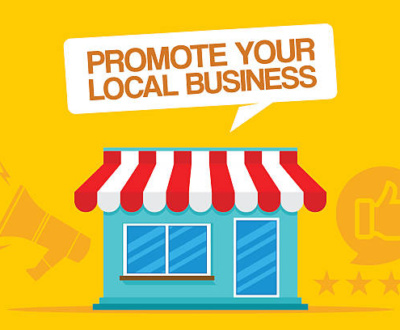This post originally appeared on the Wishpond Blog. Wishpond is a marketing platform that enables marketers to generate, nurture, and manage leads.
Bounce Rate: What It Is and How to Solve It with a Simple Survey
Nowadays, your potential customers are spending an increasing portion of their day online. But that means they’re bombarded by more marketing clutter than ever before, which has made them all the more skeptical of ads. They interpret lots of your marketing efforts as someone trying to trick them into buying something.
But in reality, marketing is all about giving people what they want. As a modern marketer, you know that today’s technologies help you get the right information in front of the right people. It’s the only way to win new customers.
And nothing keeps you focused on that reality better than knowing your bounce rate. Bounce rate is the percentage of visitors who leave your site after viewing just a single page. That could mean they click an external link, hit the back button, close their tab—whatever.
But more important than how they bounce is why. A high bounce rate shows that your landing pages are making a bad first impression. They aren’t delivering the information visitors want or else they’d check out more of the site.
But even with a stratospheric bounce rate, all is not lost. The solution is refreshingly simple: just ask your visitors what’s wrong. If you just ask your site’s visitors (the people with the real insights), they’ll tell you why your page isn’t meeting their expectations so you can take steps to fix it. Let’s dive into why bounce rate is so important and how you can use on-site surveys to lower it.
Are all bounces bad?
Context is everything when it comes to bounce rate. It only matters for some of your site’s pages. The key is knowing which ones.
For instance, someone finding a 4,000-word blog of yours via Google search, reading it, and closing the window would constitute a bounce. But if that same person briefly traveled to the blog from Google, clicked to your homepage without even reading it, and then closed the window, that wouldn’t be a bounce because they clicked to another part of your site before leaving. It’s counter-intuitive because the visitor who actually read the blog is clearly more valuable, but somehow they’re the one who negatively affects bounce rate.
That’s why you need to calculate bounce rate for one landing page at a time while keeping in mind the distinct goals of the page itself and the users who travel to it. At Qualaroo, we’ve found that you should only worry about bounce rate for these specific pages and types of traffic:
- Landing pages with a conversion goal. These are landing pages that ask users to do something like start a free trial, schedule a demo, or download an e-book. A low bounce rate correlates with success for that page’s goals, since each of those actions would take users to a new page and not result in a bounce.
- External traffic. You should only measure bounce rate for visitors who reach your site by clicking a backlink from elsewhere on the web or who come in via organic search. Not only that, but you need to segment that bounce rate based on where the user comes from in order to find and destroy bad backlinks.
Speaking broadly, a high bounce rate on those pages means they’re not relevant to the users who visit them. If your landing pages don’t deliver compelling, clear value propositions to users, you have no shot at converting them into leads or customers. In that sense, bounce rate represents the ultimate failure for a marketer.
Thinking more tactically, a high bounce rate can also tank a landing page’s organic search ranking. That’s right. Google’s algorithms are smart enough to tell that if most people who visit a page leave the site immediately then it isn’t providing enough value to rank well.
How to lower your bounce rate with a survey
The key to solving bounce rate is to find the disconnect between what visitors want and expect from your landing page, and what it actually delivers. The simplest way to find out is to ask them directly by placing user surveys on your bounciest pages.
It all starts with a simple, yes-or-no question:

It cuts through the noise and makes it insanely easy for customers tell you what they thought of your landing page making visitors more likely to respond. From there, you can optimize your survey in three simple steps:
Step 1: Target the right users
Survey platforms like Qualaroo let you target your questions to specific users based on several characteristics. Remember, you only need to get feedback from users who arrive at your page by clicking a link on another website or by using a search engine.

To target visitors who arrive by clicking a link, you’ll need to enter the web page that holds that link. That might seem like a hindrance because you can only check one link at a time. But by segmenting traffic this way, you get a super clear breakdown of which backlinks are sending you the wrong types (or “bounciest”) of visitors.
For instance, if you sell mobile analytics software but another site sending people to your page promises them, say, a celebrity gossip blog, then bounce rate will and should be high for that link—but the landing page itself is probably fine. The real problem is that the spammy link is sending you bad traffic. You can use a service like Ahrefs to get a list of all the backlinks to any page on your site. Then, when you identify the bad ones, use the “disavow link” tool to stop Google from counting bounces from those links against you.

Targeting search traffic is similarly easy, though you’ll probably just want to focus on Google. This is the first step to identifying the search keywords you’re targeting that are actually sending you bad, bouncy traffic.
By setting up these two targeting mechanisms, you ensure that your survey only reaches the users whose bounces matter.
Step 2: Nail the timing
Once you know you’re targeting the right kinds of visitors, you need to time your survey correctly to ensure it’s reaching people who are actually going to bounce. Time the survey to appear when users appear to be leaving the page.

You might think a “soon-to-bounce” user would be the last person willing to fill out a survey. After all, you can’t even keep them on your site, right? But actually, page abandonment surveys boast 4x higher response rate than the average survey. The site visitor clicked your link for a reason. They were expecting something relevant or interesting, and when they didn’t get that they felt an emotional letdown. Your survey represents a quick, easy way for them to vent their frustration and let you know what you’ve done wrong.
Step 3: Choose the right follow-up questions
Your survey’s first question uncovers whether or not visitors think your landing page is useful. But for users who say it wasn’t, immediately hit them with the right follow-up to learn why.
Those follow-up questions are going to look different for users depending on whether they reached your landing page through a backlink or a search engine.

It’s best to play it straight with users who arrive on your landing page by clicking a link. And while you might think disappointed users have no incentive to answer another question, because they’ve already answered another one they’re actually very likely to. And if that doesn’t hold true, you can always offer a small reward in exchange for feedback.

If a user arrived on your landing page through a search engine, then you need to uncover what search terms led them there. If a significant number of respondents are citing search keywords you’re targeting, then thank your lucky stars. You now know not to target those keywords anymore since they send you such poor, bounce-heavy traffic.
When you get enough responses to either follow-up question – the backlink-targeted version and the search-targeted version – the most common responses to both will tell you what users want out of your landing page. After that, you can start testing new messaging that better aligns with those expectations and watch conversions soar.
The simple solution
Your website’s bounce rate is a complex problem with big implications. It only matters for some of your site’s pages, but they’re the most important pages you’ve got – the ones that drive conversions. And if their bounce rate is high, they’re failing you and your visitors.
But the solution is easier than you think: Just ask your users. Their input lets you build more effective, user-centric landing pages that rake in new customers.
This is author biographical info, that can be used to tell more about you, your iterests, background and experience. You can change it on Admin > Users > Your Profile > Biographical Info page."
About FunnelGrowth
We are a digital marketing company with a focus on helping our customers achieve increase their sales across all online channels.
Request a free quote
Is your company's marketing not getting the results you need or you need help executing a new campaign? Contact us to schedule a FREE 30 minute strategy session.
Recent Posts
- The Importance Of Good Web Hosting September 17, 2019
- Why You Need Google Reviews For Your Local Business September 3, 2019
- Making A Content Strategy For Your Business August 20, 2019

